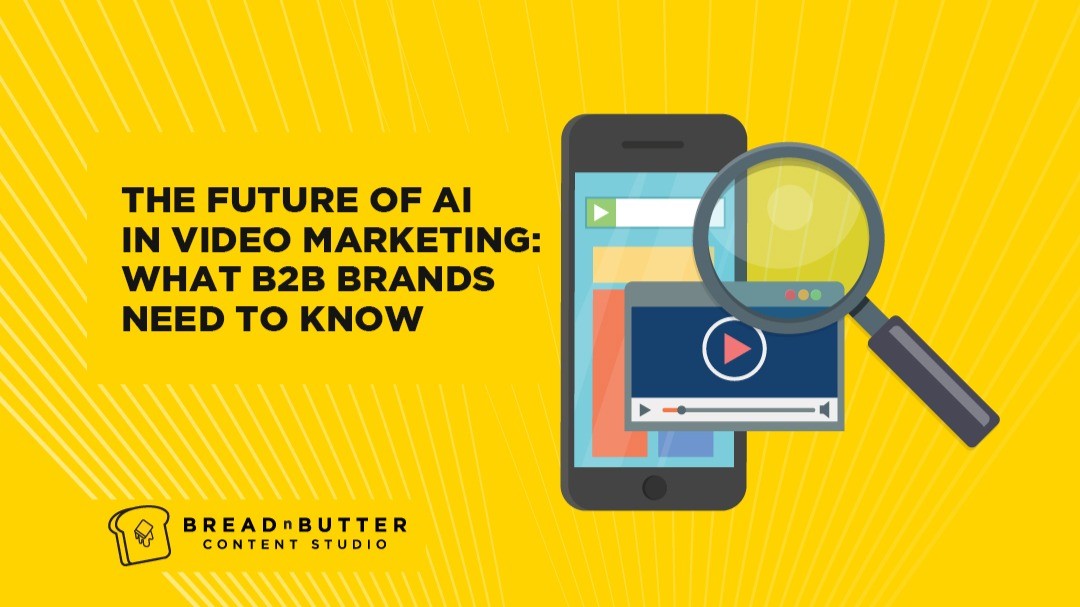It’s a rapidly changing world for B2B marketers. New tools, shifting buyer behaviors, and advancing technologies are reshaping how brands connect with decision-makers. And thanks to advances in AI, machine learning, and analytics, video is becoming more personalized, scalable, and measurable than ever before. Keep reading to see how video marketing factors into the future.
1. Personalization at the Segment Level
Even if you can’t personalize your video strategy to every single person, you can create videos for specific industry verticals, job roles, or account tiers, making your message feel tailored without needing to go fully 1:1.
Artificial Intelligence (AI) and Machine Learning (ML) are central to this evolution. These technologies help marketers sift through massive datasets to identify behavioral trends and segment audiences more intelligently. With these insights, marketers can dynamically deliver personalized messages—such as showcasing industry-specific use cases to a CTO in healthcare or highlighting ROI statistics for a procurement officer in manufacturing.
According to Gartner, “The typical buying group for a complex B2B solution involves six to 10 decision makers, each armed with four or five pieces of information they have gathered independently and must de-conflict with the group.” This means segmentation is more important than ever. Segmenting your message—by persona, intent, or stage—makes it easier for those decision-makers to see how your solution meets their specific needs.
2. AI-Enhanced Content Creation
Now that artificial intelligence has helped you further understand your customer segments, you can then use AI tools to help create video. AI isn’t just enhancing video delivery—it’s actively changing how video content is produced. From scripting and voiceover generation to auto-editing and thumbnail selection, AI is helping B2B marketers create high-quality videos faster and more affordably than ever before.
Content & presence matter. Rich, persona-targeted digital content is essential for visibility and trust. B2B buyers rely heavily on online research. AI can help you create a higher volume of quality content that speaks directly to each customer’s needs.
For example, tools like Synthesia can create a video in multiple languages within minutes, while Pictory can turn a powerpoint presentation into a video with an AI voiceover seamlessly. This efficiency can make it possible to regularly produce persona-specific videos without breaking the budget.
Formats like webinars, explainer videos, and customer testimonials remain critical. But as AI makes production more accessible, we’ll also see a rise in bite-sized video series, interactive content, and on-demand demos tailored to niche audiences. Content strategist Alexandra Rynne writes for LinkedIn for Marketing, “With so many companies still relying on traditional SEO and content marketing strategies, integrating short-form video sets your brand apart and positions you as an innovator in your industry.”
3. A New Wave of Analytics and Success Measurement
Traditionally, B2B marketers have had to rely on surface-level metrics like views and clicks to evaluate video success, which can lead to a real disconnect between sales teams and marketing teams when it comes to measuring success. But that’s changing. In 2025, video analytics are evolving to connect directly with sales outcomes—bridging the gap between marketing efforts and business results.
Modern platforms like Wistia now offer native integrations with CRMs like HubSpot, HootSuite, and Pardot. These integrations allow marketers to track video engagement on a contact level, such as how long a specific lead watched a demo or whether they revisited a case study video multiple times.
With this deeper visibility, sales teams can be alerted to warm leads in real time and prioritize outreach accordingly. Video scoring can also be added to lead scoring models, helping to surface buyers with high intent based on how they interact with your content. This level of precision allows for smarter campaign optimization, personalized nurture paths, and better alignment between sales and marketing teams.
Going forward, expect more advanced attribution models that connect video views to revenue metrics, enabling CMOs to prove ROI more definitively—and allocate budget toward the formats and messages that convert.
4. Refining Account-Based Marketing Tactics with AI Insights
AI is helping unlock video’s full potential when it comes to Account-Based Marketing (ABM). In the past, producing high-touch, personalized video content for each target account was resource-intensive and often reserved for only the top few accounts. But AI now makes scalable personalization a reality.
With tools like ChatGPT, Jasper, and Adobe Firefly, marketers can create tailored scripts, visuals, and even voiceovers for different accounts in minutes. AI can help you pull in company-specific news, use case examples, and known pain points, allowing you to customize your message at a level that feels highly personal—without starting from scratch each time.
Imagine a sales rep sending a 60-second video to a key decision-maker at a fintech company that references their latest product launch and demonstrates how your platform solves a known challenge in their sector. AI can help you generate and deliver this type of content, giving ABM campaigns more reach without sacrificing the personal touch. “It could be used to assemble different decision and different date into different personas for each account,” says Lorena Harris, an ABM expert and consultant at Ascend Marketing in an interview with Martechify.
Moreover, AI can help ABM teams prioritize which accounts to target next by analyzing engagement signals across video content, highlighting which companies are showing buying intent based on who’s watching what, when, and for how long. This allows marketers to dynamically adjust messaging or escalate outreach based on real-time interest, making your ABM efforts smarter and more responsive.
